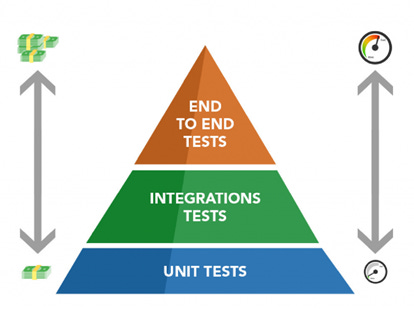Unit Test - Best Practices
The base of software testing is unit tests, and they are more common in projects because they are cheaper and faster to run. Let’s go deep on how we can do better unit testing.
Benefits of unit tests
Unit tests bring many benefits to the software, here are some of them:
More safety to do maintenance and new features.
Provide a way to have more concise code.
It can serve as documentation for other developers
“Legacy Code is code without Tests.”
― Michael Feathers
FIRST & CORRECT
To understand how the tests should behave, let's first understand two acronyms, the FIRST and the CORRECT.
Those who know TDD (Test Driven Development), follow the pattern of writing the test first, after failing, writing the code to pass the test, and keep doing this until the development is finished.
The FIRST acronyms will help us to write tests following some essential rules, and can be used with TDD or without it:
Fast: The Faster, the Better. The idea is not to depend on external integrations, like file directories, the internet, databases…
Independent: The test can't depend on other tests. The unit test has to be able to run independently without caring about the order.
Repeatable: The unit test can be run multiple times and the result should always be the same.
Self-Validating: Each test needs at least one assertion to validate the execution
Timely: The unit test needs to have smart coverage, trying to find all the boundaries, to ensure the test will validate all the scenarios.
They also need to be done at the right time. By creating the test first, you ensure your code more quality.
In addition to tests being FIRST, it is also necessary to think that it must be CORRECT.
CORRECT is useful to validate if your test is good. For that, you have to answer these questions:
Conformity: Does the data represent the correct type?
Order: Is the order of the result as expected?
Range: Are you validating the range of the data?
Reference: Does the test call any external service?
Existence: Can the unit test value be null or negative?
Cardinality: There is enough value?
Time: Is everything running in some order? Is it safe with concurrency?
Test Nomenclature
It is also important to create tests with meaningful names. Tests can be executed by new developers to understand better what the class does.
There are some approaches to choosing a good name:
"Given-When-Then": According to a certain context, when something happens, we will expect some result.
Example: givenUserLoggedInWhenClickLogoutThenRemoveTheSession
"When-Then": It is common to use without context too.
Example: whenUserLoginThenShowTheUseTerm
"Should-When": Something must happen when something else happens.
Example: shouldHaveDiscountWhenBillingIsBiggerThan50
Conclusion
This is an introduction to the importance of tests, and how we can create better tests. Please keep in mind the test is part of the code, so do it with care and remember that if your tests degrade, your code will too, so keep your tests clean.
References
Pragmatic Unit Testing in Java 8 With JUnit - Jeff Langr, Andy Hunt, Dave Thomas
Clean code - Robert Cecil Martin


